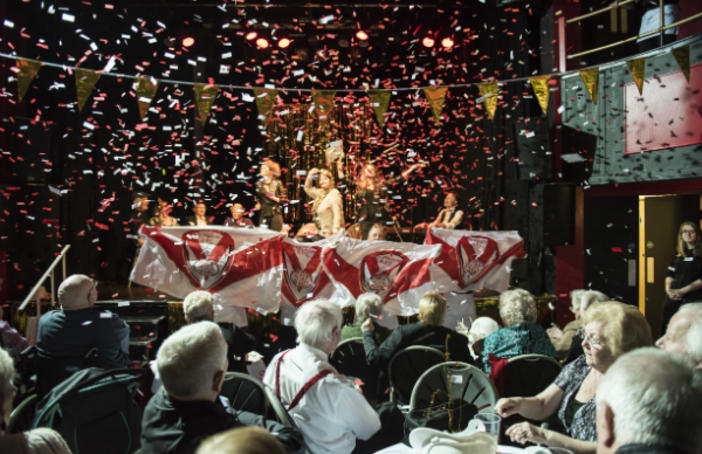Blog Post
Research shows we are successfully engaging more people from areas of least participation in the arts
Today we publish two reports sharing impacts and outcomes from the first three years of our programme.

Today we publish two reports sharing impacts and outcomes from the first three years of the Creative People and Places programme (2013-2016).
They highlight how CPP is reaching people who didn’t regularly engage in the arts before and is contributing to an increased sense of belonging in communities, by inviting people to choose, create and take part in art experiences where they live. The numbers show that:
- the programme achieved 1.45 million audience ‘engagements’ across 3099 activities (Ecorys report)
- 91% of audiences and participants came from neighbourhoods with low or medium engagement in the arts. In particular there was an over-representation of the lower engaged segments, which accounted for 48% of participants and 36% of the population. (Audience Agency profiling and mapping report)
The three-year meta-evaluation by research agency Ecorys also found:
- evidence suggests that CPP has changed individual, community and sector perceptions of the arts and that participation in CPP leads to greater empowerment, confidence and an increased sense of belonging in communities.
- partnership-working across CPP is providing opportunities for mutual learning, improved access to communities at grassroots level and additional expertise and assets. The best partnerships are locally relevant, flexible and responsive.
- CPP is increasingly being recognised for its excellence in art, which has raised its profile and is starting to have a positive impact on the sector through increased recognition, ambition and links with NPOs
- CPP is now being recognised as a source of good practice and learning among the wider arts sector.
The reports from Ecorys and The Audience Agency were commissioned as part of our national evaluation programme (2013-2016) managed by A New Direction. The aim of the national evaluation is to understand what worked and what did not, with an emphasis on generating new knowledge and approaches about engaging communities in the arts.
For a rich thematic exploration of our learning over the last three years, read Mark Robinson's Faster but Slower, Slower but Faster, published earlier in the year.
Holly Donagh, Partnerships Director at A New Direction and consortium member for Creative Barking & Dagenham, says:
“The first three years of Creative People and Places has shown that involving local people in shaping arts programmes leads to some powerful results and starts to change the ways in which art is commissioned, made and shared. CPP’s participatory approach to culture and creativity is working and could be a model for the future of arts engagement, one that is more democratic and that challenges traditional models.”
Rachel Adam, Director of bait, the CPP project in South East Northumberland, adds:
“CPP is an action-learning programme and ongoing evaluation and reflection is central to our work, as is our peer to peer learning with the other projects in the CPP network. We are building a learning community around arts engagement and are keen that what we’re learning contributes to the development of practice in the wider cultural sector.”
Arts Council England invested £37m of National Lottery funding into the 21 Creative People and Places projects. It has committed to investing a further £20m between 2015 and 2018 and has so far awarded in excess of £12m over two further rounds of funds for existing places.
Darren Henley, Chief Executive of Arts Council England, says:
“Our Creative People and Places programme puts people in control of artistic decisions that affect the quality of their cultural lives. By working with audiences in an exciting new way, we’re helping more people to discover or rediscover their own creativity and to engage as volunteers, commissioners, producers, and audiences. Our investment in this area is already generating interest from others around the world who want to find ways of supporting people to lead and shape their local cultural opportunities.”
As part of the national evaluation Ecorys also produced twelve case studies on themes including: engaging communities; increasing well-being; presenting art in unusual locations; developing partnerships beyond the arts; and talent development.
On 18 September CPP will be publishing two further resources from the national evaluation. Power Up by Chrissie Tiller is a think-piece that explores some of the complexities and challenges of sharing power. The Shared Decision-Making Toolkit by Louise White is a practical resource that shares examples and tools drawn from CPP, showing how projects have involved local people in project-level decision-making.







